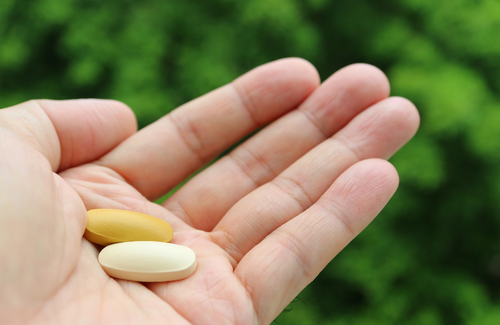Prescription of generic versions of antiretroviral drugs for treatment and pre-exposure prophylaxis (PrEP) as soon as they come off patent would save the NHS £7 billion between 2018 and 2033, an analysis led by Public Health England has shown.
By 2021, use of generic antiretrovirals wherever available would save the NHS £500 million a year, but only if doctors rapidly switch to prescribing generic products as soon as they become available.
The researchers looked at what would happen to the cost of treatment if doctors switched to prescribing generic versions of antiretroviral drugs as soon as market exclusivity on the original branded product ran out and generic versions became available.
The analysis assumed that everyone would be treated according to patterns of drug prescription in 2016. The study used data from the HIV and AIDS Reporting System, which gathers anonymised data on all patients receiving HIV care at all HIV outpatient clinics in England, including information on drug regimens prescribed and patterns of drug usage including switches to new regimens.
Antiretroviral cost data were taken from the British National Formulary (BNF) 2015, which lists the price agreed with the NHS. Local costs may vary according to tendering agreements between hospitals and pharmaceutical companies, so use of BNF data will tend to overestimate the cost of branded products somewhat.
Generic drug costs were estimated as being 10% or 50% of the price of branded products. The researchers estimated an average life expectancy of 78 years for people living with HIV in care in 2016.
First of all, the researchers modelled the lifetime cost of antiretroviral treatment for everyone with HIV receiving care in England (85,000 people) based on patterns of drug usage in the HIV and AIDS Reporting System. This analysis was designed to capture changes over time in the cost of treatment as people moved to more complex regimens or newer drugs that are still on patent.
Then, the researchers looked at two scenarios:
- The impact of switching people to generic versions of drugs as soon as they became available.
- The cost of providing PrEP using generic drugs at 10% of the cost of branded drugs (£433 per year) to 50,000 people at high risk of infection, assuming an incidence rate of two infections per 100 person-years.
The lifetime cost of antiretroviral treatment varied from £193,000 (discounted at 3.5%) to £404,300 (undiscounted) according to the inflation rate. The annual cost varied from £7173 to £10,017 per year and tended to be lower during the first 20 years after diagnosis. Non-antiretroviral HIV care costs amounted to £1450 per year.
Assuming generic products are adopted when they are introduced, the lifetime cost of treatment would fall to £73,300 if generic drugs cost 10% of the price of branded products, or £125,100 if generic drugs cost 50% of the price of branded products. The lifetime cost of treatment would fall by 42 to 69%.
If doctors persisted in prescribing branded products after patent exclusivity ends, the cost of treating 85,000 people between 2018 and 2033 would be £10.5 billion. If half of all patients were switched to generics after they became available, the cost of treatment would be £7.2 billion. If everyone was switched to generics when they became available and the prices fell to 10% of the branded product price, the cost of treatment would be £3.6 billion.
The cost of prescribing PrEP to 50,000 people would be £21.6 million a year if generics were used at 10% of the price of branded products. This expenditure would avert £29.8 million of HIV care costs over five years and £124 million over a lifetime, assuming 1000 infections were averted.
The researchers emphasise the importance of rapid switching to generic use after they become available to realise substantial cost savings.
A limitation of the analysis is the low proportion of people receiving treatment with an integrase inhibitor (fewer than 10% on first-line treatment in 2016 received an integrase inhibitor), as integrase inhibitors will go off patent later than most other drugs.
Current treatment guidelines recommend the use of an integrase inhibitor (raltegravir, elvitegravir or dolutegravir) or the non-nucleoside reverse transcriptase inhibitor rilpivirine or the protease inhibitor darunavir in combination with tenofovir and emtricitabine.
Potential savings might be lower if integrase inhibitors predominate in first-line treatment over the next decade, although combining an integrase inhibitor with cheaper generic products may offset this. On the other hand, a shift towards injectable treatment or newer products that will remain patented throughout the period up to 2033 would limit savings.
|
Product |
Year of generic availability |
2015 cost |
|
Abacavir/lamivudine |
2019 |
£3645 |
|
Emtricitabine & tenofovir DF |
2019* |
£4331 |
|
Atazanavir |
2019 |
£3694 |
|
Darunavir |
2020 |
£5439 |
|
Maraviroc |
2023 |
£5372 |
|
Raltegravir |
2024 |
£5739 |
|
Etravirine |
2024 |
£3688 |
|
Rilpivirine |
2027 |
£2438 |
|
Dolutegravir |
2027 |
£2988 ** |
|
Tenofovir DF/emtricitabine/rilpivirine |
2027 |
£6403 |
*the article states that the patent for this product expires in 2021 but generic versions are already available in the United Kingdom. The lowest annual cost for a generic version is £1272 p.a.
**Dolutegravir was not included in the article, details and price from British National Formulary 2019.
Combination tablet patents will persist beyond 2027.
Ong KJ et al. HIV care cost in England: a cross-sectional analysis of antiretroviral treatment and the impact of generic introduction. HIV Medicine, advance online publication, 29 April 2019.

